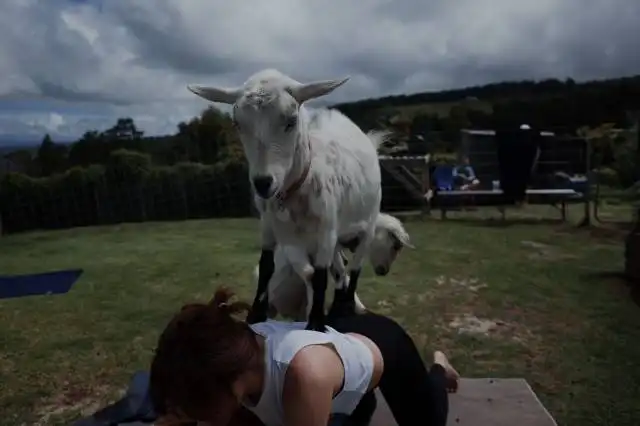Start a Sensory Deprivation Tank Business
Embark on a Journey to Inner Calm: Start Your Own Sensory Deprivation Tank Venture
| Updated


SENSORY DEPRIVATION TANK BUSINESS
Consider embarking on a Sensory Deprivation Tank venture, a unique and intriguing wellness business concept. Sensory deprivation tanks offer a meditative experience by floating in a pod filled with Epsom-salt water at skin temperature, creating buoyancy that lets you float with zero gravity. It's like offering your clients their very own spaceship to inner calm! A dream for peace seekers, it's a marketplace catering to stress relief, improving mental clarity and increasing overall well-being.
Jump to Business Plan
RELATED BUSINESS IDEAS
Browse ALL Health & Beauty Innovations Business Ideas
Discover Your Perfect Domain
Unlock the door to your online success with our hand-picked selection of premium domain names. Whether you're starting a new venture or rebranding an existing one, the right domain can set the tone for your digital presence. Browse through our curated list, each with its unique potential to enhance your brand's visibility and credibility.
SENSORY DEPRIVATION TANK MINI BUSINESS PLAN
This a quick reality check to help you identify the strengths and weaknesses of your business concept before you dive in.
Sensory Deprivation Tank Business
Expected Percent Margin:
- Gross Margin: 60-70%
- Net Profit Margin: 20-30%
Earnings Expectations:
- Daily Earnings: Depends on the number of tanks and sessions. For example, with 3 tanks and an average of 5 sessions per tank at $60 per session, $900/day.
- Weekly Earnings: Assuming a 5-day work week, $4,500/week.
- Monthly Earnings: $18,000/month.
- Annual Earnings: $216,000/year.
Keep in mind the profits would be after covering operation costs.
Actions to Hit Those Numbers:
Tank Purchase and Installation:
- Initial Investment: Costs to purchase and install tanks range from $10,000 to $30,000 per tank.
Regular Cleaning and Maintenance:
- Maintenance Costs: Budget for regular cleaning and maintenance of each tank, estimated at $200-500 per tank monthly.
Marketing and Customer Acquisition:
- Website and Online Marketing: Invest in a well-designed website and SEO to attract customers. Budget $500-$1,000/month for online advertising.
- Local Partnerships: Partner with local wellness and fitness centers to provide package deals.
Operations:
- Staffing: Hire/train staff to handle booking and customer service.
- Open Hours: Operate 5-7 days a week with various session times throughout the day.
Cost Control:
- Lease: Lease or rent a space. Try to keep this cost to under 20% of your projected monthly income.
- Utility Bills: Budget around $500-$1,000/monthly considering high water and electricity use.
Requirement of ongoing quality service and good customer experience are the keys to running a successful sensory deprivation tank business. It's always a good idea to consult with a business consultant or finance advisor for personalized guidance.
Keep in mind these are approximate numbers depending on your location, competition, and more.
NOT WHAT YOU HAD IN MIND? Here are more ideas



Browse ALL Health & Beauty Innovations Business Ideas
Grab Your Business Website Name
Before you get caught up in the whirlwind of setting up your business, invest in a domain name. It's a small but significant step that lays the foundation for your brand and makes it easier for customers to find and trust you. Just like you wouldn't build a house without securing the land first, don't build a business without securing your domain name.
"Why? Can't that wait?" Here's why it shouldn't
Step 1: Determine if Starting a Sensory Deprivation Tank Business is Right for You
Breakdown of Startup Expenses
When considering starting a sensory deprivation tank business, it is important to understand the startup costs associated with the venture. These costs will include the cost of the tank itself, as well as any necessary renovations to the space where the tank will be located. Additionally, the cost of any necessary permits, licenses, and insurance will need to be taken into account. Depending on the size and scope of the business, other costs such as marketing, advertising, and staffing may also need to be factored in. It is important to have a clear understanding of the total startup costs before beginning the venture.
Breakdown of Ongoing Expenses
In addition to the startup costs, it is important to consider the ongoing expenses associated with running a sensory deprivation tank business. These costs will include the cost of maintaining and cleaning the tank, as well as the cost of utilities such as electricity and water. Additionally, the cost of any necessary supplies, such as towels and robes, will need to be taken into account. It is important to have a clear understanding of the total ongoing costs before beginning the venture.
Examples of Ways to Make Money
Once the startup and ongoing expenses are taken into account, it is important to consider how to make money from the business. One way to make money is to charge customers for the use of the tank. Additionally, the business can offer additional services such as massage therapy or yoga classes. It is important to consider the local market and what services customers are likely to be interested in. Additionally, the business can consider offering discounts or promotions to attract customers. It is important to have a clear understanding of the potential sources of income before beginning the venture.
Step 2: Name the Business
When naming a business, it is important to consider the target audience and the overall mission of the business. It is also important to make sure the name is unique and memorable. Additionally, it is important to make sure the name is easy to pronounce and spell. It is also important to research if the name is already taken, as well as if there are any potential trademark issues. Finally, it is important to make sure the name is available for use on social media and other digital platforms.
Brainstorming Ideas
When brainstorming ideas for a business name, it is important to think of words that evoke the mission of the business. It is also important to think of words that are related to the sensory deprivation tank industry. Additionally, it is important to think of words that are unique and memorable. Furthermore, it is important to think of words that are easy to pronounce and spell. Finally, it is important to think of words that can be used on social media and other digital platforms.
Step 3: Secure Financing
Securing financing is an essential step in starting any business, and a sensory deprivation tank business is no exception. There are several options for financing a business, including traditional bank loans, venture capital, and crowdfunding. Bank loans are the most common form of financing and typically require a business plan and collateral. Venture capital is another option and involves an investor providing capital in exchange for a stake in the business. Crowdfunding is a newer option and involves raising money from a large number of people.
Tips for Securing Financing
When seeking financing, it is important to have a clear plan for how the money will be used and how it will help the business succeed. It is also important to research the different financing options and understand the terms and conditions of each. Additionally, it is important to have a good credit score and a solid business plan. Finally, it is important to be prepared to answer questions about the business and its potential for success.
Step 4: Obtain Licenses and Permits
To start a sensory deprivation tank business, you must obtain the necessary licenses and permits from both the local and state governments. Depending on the state, you may need to apply for a business license, a health permit, and a zoning permit. Additionally, you may need to obtain a fire safety permit, a hazardous material permit, and a wastewater discharge permit. It is important to research the specific requirements for your state and local area to ensure that you have all the necessary permits and licenses.
Insurance
In addition to the necessary licenses and permits, it is important to obtain the right insurance for your business. This includes general liability insurance, property insurance, and workers' compensation insurance. It is important to ensure that you have the right coverage for your business to protect yourself and your customers. Additionally, you may want to consider obtaining additional coverage for any potential risks that may arise.
Hiring Employees
If you plan to hire employees for your business, you must also obtain the necessary permits and licenses for hiring employees. This includes obtaining an employer identification number (EIN) from the IRS, registering with the state’s unemployment insurance program, and obtaining a state tax withholding permit. Additionally, you may need to obtain a state sales tax permit and a federal tax withholding permit. It is important to research the specific requirements for your state to ensure that you have all the necessary permits and licenses for hiring employees.
Step 5: Find a Location
When choosing a location for a sensory deprivation tank business, there are several factors to consider. First, the location should be easily accessible to customers. This could mean being located in a high-traffic area, or in a place that is easy to find. Additionally, the location should be large enough to accommodate the tanks and any other necessary equipment. It should also be close to any necessary utilities, such as water and electricity. Finally, the location should be affordable and have the necessary permits and zoning regulations.
Securing a Lease
Once a location has been chosen, the next step is to secure a lease. This means researching the rental market in the area and finding a landlord who is willing to rent the space. It is important to read the lease carefully and make sure that it meets the needs of the business. Additionally, it is important to negotiate the terms of the lease, such as the length of the lease, the rent amount, and any other conditions.
Setting Up the Space
Once the lease is signed, the next step is to set up the space. This includes installing the tanks, any necessary equipment, and any other amenities that customers may need. It is important to make sure that the space is comfortable and inviting, as this will help to attract customers. Additionally, it is important to make sure that the space is safe and meets all local regulations.
Advertising the Business
Once the space is set up, the next step is to advertise the business. This includes creating a website, setting up social media accounts, and creating flyers and other promotional materials. Additionally, it is important to reach out to local media outlets and let them know about the business. This will help to spread the word and attract customers.
Step 6: Purchase Equipment
When starting a sensory deprivation tank business, there are several types of equipment that must be purchased. The most important piece of equipment is the tank itself. This is the vessel in which the customer will float in and experience sensory deprivation. The tank should be large enough to fit a person comfortably and should be made of a material that is easy to clean and maintain. Additionally, the tank should have a temperature control system to ensure the customer is comfortable. Other equipment that must be purchased includes a filtration system, a ventilation system, and a lighting system.
Where to Buy Equipment
When purchasing the necessary equipment for a sensory deprivation tank business, it is important to purchase from a reputable supplier. There are many suppliers of sensory deprivation tanks and related equipment, both online and in-person. It is important to research each supplier to ensure they are reliable and offer quality products. Additionally, it is important to compare prices between suppliers to ensure the best deal is found.
Cost of Equipment
The cost of the equipment needed to start a sensory deprivation tank business can vary greatly depending on the type and quality of the equipment purchased. Generally, the cost of the tank itself can range from a few hundred dollars to several thousand dollars. Additionally, the cost of the filtration system, ventilation system, and lighting system can range from a few hundred dollars to several thousand dollars. It is important to research the cost of the equipment before purchasing to ensure the best deal is found.
Financing Options
For those who do not have the funds to purchase the necessary equipment for a sensory deprivation tank business, there are financing options available. Many suppliers offer financing options for their equipment, allowing customers to purchase the equipment and pay for it over time. Additionally, there are many banks and other lenders that offer financing for business equipment purchases. It is important to research the different financing options available to ensure the best deal is found.
Step 7: Hire Employees
When hiring employees for a sensory deprivation tank business, it is important to look for qualities that will ensure the business runs smoothly and efficiently. Employees should be friendly, reliable, and have a good understanding of the business. They should also be able to handle customer inquiries and complaints in a professional manner. Additionally, they should be knowledgeable about the tanks and the safety protocols that need to be followed. It is also important to look for employees who are comfortable with technology, as the business will likely involve some form of online booking system.
Training
Once the right employees have been hired, it is important to provide them with the necessary training to ensure they are prepared to work in the business. Training should include a thorough overview of the tanks, safety protocols, and customer service. Employees should also be trained on the booking system and any other software that is used in the business. Additionally, employees should be familiar with the business’s policies and procedures, as well as any relevant laws and regulations. Finally, employees should be trained on how to handle customer inquiries and complaints.
Step 8: Market the Business
Once the business is up and running, it is important to market the business. This can be done through a variety of methods, such as creating a website, using social media, and advertising in local newspapers. Additionally, it is important to create a referral program to incentivize customers to refer their friends and family.
Networking
Networking is another important aspect of marketing the business. This can be done by attending local business events and joining local business organizations. Additionally, it is important to build relationships with local health and wellness professionals, such as massage therapists, chiropractors, and yoga instructors, as they may be able to refer customers to the business.
Utilizing Online Resources
In addition to traditional marketing methods, it is important to utilize online resources to market the business. This can be done by creating a website, optimizing the website for search engines, and utilizing social media platforms, such as Facebook and Instagram. Additionally, it is important to create content, such as blog posts and videos, to engage potential customers and build brand awareness.
Advertising
Advertising is another important aspect of marketing the business. This can be done through a variety of methods, such as radio and television ads, print ads, and online ads. Additionally, it is important to create promotional materials, such as flyers and brochures, to distribute to potential customers.
Evaluating the Results
Finally, it is important to evaluate the results of the marketing efforts. This can be done by tracking the number of customers, the amount of revenue generated, and the number of referrals. Additionally, it is important to track the effectiveness of each marketing method to determine which methods are most effective.
Step 9: Monitor the Business
Monitoring the business is an important part of running a successful sensory deprivation tank business. There are several ways to monitor the business, including tracking customer feedback, tracking sales, and tracking expenses. Customer feedback can be collected through surveys, customer reviews, and customer interviews. Sales can be tracked using sales reports and sales tracking software. Expenses can be tracked using an accounting software or a spreadsheet.
Analyzing the Data
Once the data has been collected, it is important to analyze the data in order to identify any areas of improvement. Analyzing the data can help to identify areas where the business can be improved, such as increasing customer satisfaction or reducing costs. It can also help to identify any trends in the data, such as changes in customer preferences or changes in sales over time.
Taking Action
Once the data has been analyzed, it is important to take action based on the findings. This could include making changes to the business model, such as introducing new services or products, or making changes to the pricing structure. It could also include making changes to the customer experience, such as improving customer service or introducing new marketing strategies. Taking action based on the data can help to ensure that the business is running as efficiently and effectively as possible.
Evaluating Results
Finally, it is important to evaluate the results of any changes that have been made. This can be done by comparing the data before and after the changes have been implemented. This can help to determine whether the changes have had a positive or negative effect on the business. If the changes have had a positive effect, then they should be kept in place. If the changes have had a negative effect, then they should be adjusted or removed.
EXPLORE MORE CATEGORIES
Browse ALL Business Idea Categories
TAKE THE NEXT STEPS










